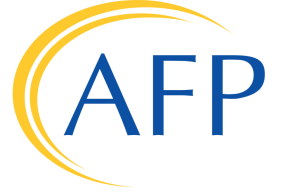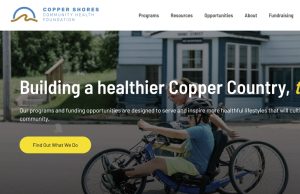I settled into a chair in front of my computer on the morning of December 8, dusted off my credit card, cracked my knuckles, and proceeded on a journey that has taken me through 66 charities, three time zones, and what seemed like a million unanswered questions.
I sat down to give $15, online, to 66 of the largest charities in America. This journey began with an open mind, not really knowing what would be found, or where it would end up.
There has been so much written about the state of online fundraising — much of it contrary, a lot of it hyperbolic — my mind was swimming with questions while I sat there giving for eight nonstop hours:
- How are today’s charities treating their online donors?
- What kinds of email follow up will I see?
- Are organizations integrating their email with their postal mail?
- Will these spots I’m seeing in my eyes ever go away?
So, rather than wonder, I decided to charge. And type. And charge. And type. It became my own national travelogue of America’s Web sites, a kind of “If It’s 2 p.m., It Must Be Brigham and Women’s Hospital.”
By the end of that day, 65 charities (yes, there is still one holdover not accepting gifts online) had received my gift. By the next morning, 62 of them had acknowledged my donation with a thank you. Interestingly, of those three charities that didn’t send me an email thank you, two of them sent me their thanks through the postal mail instead. In each instance, the letter was received within a week, but did not mention where I had made the gift.
However, exactly what those 62 “thank you’s” looked like, sounded like, and felt like to me, varied significantly. Given how important this first touch is, the rest of this column will describe to you exactly what I got – and what I thought.
FIRST IMPRESSIONS REALLY ARE LASTING
In fundraising, as in any relationship, first impressions are lasting. In terms of making that first impression, that “thank you moment,” most of the charities have done an excellent job of acknowledging my gift right away. In fact, I received an immediate (within hours) thank you from 62 of them.
However, many charities set themselves apart by taking the “thank you” a step, or even a couple steps, further. The emails broke down into three broad categories:
- The “Yep, we got it” charities (34 of the 62): In this instance, these charities treated this first touch at arms length — very, very long arms. The acknowledgement basically consisted of a quick response, recounting the barest of facts, i.e., We got your email; Here’s how much you gave; Here’s how you can reach us if you have any questions; Thanks very much; It’s been nice knowing you. (Actually, I made that last part up, but that’s how it felt.) It could be argued that these organization’s really didn’t do anything “wrong.” They got the basic facts right and they got them to me fast. But, I was hoping I wouldn’t hear back from what appeared to be their IT departments. I wanted to hear from someone who was kind of happy I just reached out and said hello. Keep in mind, that this is the impression I got from 34 of the 62 organization’s — fully 55 percent of the test nonprofits — who invested all that time, money, and talent into building an online capability to attract donors.
- The “Thanks, we’re really grateful for what you just did” charities (19 of 62): Here, the charities went a little more out of their way to acknowledge my feelings, and share a little bit of theirs. In this case, the typical email consisted of a two-or three-paragraph note, including all the factual stuff (the size of my gift, the fact they got it, contact information if I chose to get back to them), as well as, well, a little bit more. In one instance, a charity wrote that a specific “number of kids would be helped today, thanks to my help.” In another, I was reminded that my “gift helps people with (disease) live better and more fulfilling lives.” These acknowledgements may have come out of the IT department for all I know – but in these examples, the IT representative had a pulse and a heart, and seemed pretty happy to tell me that they were thankful I had reached out. I felt okay after I had heard from these 34 organizations – the same any of us feel after being introduced to someone who is civil, polite, and unafraid to reach out and shake your hand.
- The “Thanks, I hope this is the beginning of something special” charities (9 of 62): In this instance, the charities correctly saw this as an opportunity to begin establishing the relationship beyond the initial gift. While the “Yep, we got it” crowd dealt with me at arm’s length, and the “Thanks, we’re grateful” organizations reached out to shake my hand, this group wanted to give me a hug, and a pretty big pat on the back.
Besides all the basics (the gift amount, the thank you, the information about how to get back to them), here’s what else I got:
- Specific information on how my donation would be used. It’s an old axiom, and a true one, that most new donors experience a certain level of post-purchase anxiety at that moment they send in a check or click the Send button. This special layer of information, highlighting real ways my gift was being used, felt good when I read it;
- Specific links showing me where I could get help and support for my family;
- Visuals of people being helped; Specific links to educational information I might find useful;
- A signator, with a name. Interestingly, fewer than half the thank you notes included the name of a person on the other end;
Some other random cultivation ideas caught my eye and got my attention:
- WNET/THIRTEEN let me know that they had set up a free online profile for me, and invited me to “log onto Thirteen.org to get inside information about upcoming programs and online features, e-mail updates and exclusive offers.” They gave me my user name and my password right then and there, a very nice touch.
- Big Brothers/Big Sisters told me a very nice, personal story showing why my gift was so important to the kids they serve, and invited me to become a volunteer right on the spot. Through this story, and the photo of the girl and her Big Sister, I got a real taste for what they were all about, and why they were so thankful I gave.
- CARE invited me to join their online community to get extra information, and then sent me a very nice “Welcome” email a few days later, direct from the organization’s president.
- Ducks Unlimited invited me to sign up for a free newsletter, sign up for inside news about their work, and linked me right to their homepage all within a nice, warm note. They also let me know I’d be getting a “Welcome” kit in the mail, one of the best uses of email and postal mail synergy I’ve come across so far.
Of course, a lot of other organizations also did some wonderful things, but I can’t list them all here. A few final points worth mentioning: Four charities included “tell your friend” links right in the email thank you, which was nicely done. And many of these nine charities (in fact, a lot of the 62) did a very complete job in mentioning their corporate matching gift policy, and alerting me to the fact that my gift could be matched.
These Fine Nine really made me wonder what’s coming next. But, that’s for another column. NPT
Tom Gaffny is executive vice president of the direct response fundraising and database agency Epsilon in Wakefield, Mass., and a contributing editor of The NonProfit Times.












